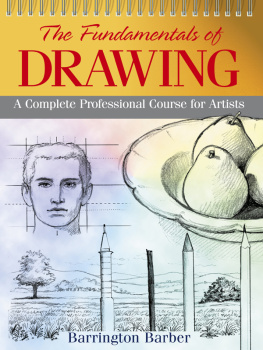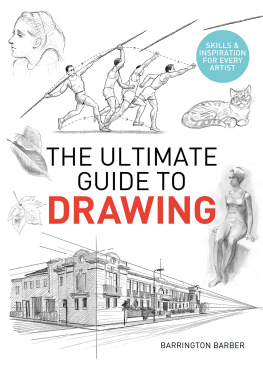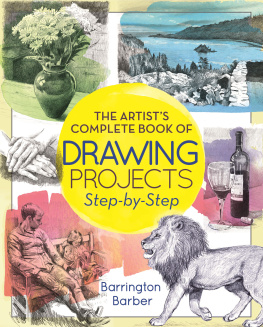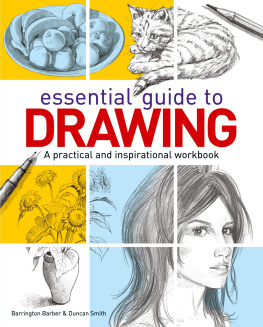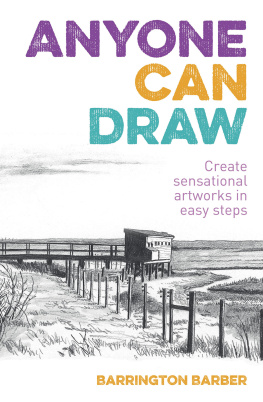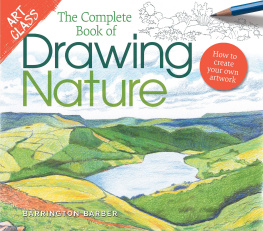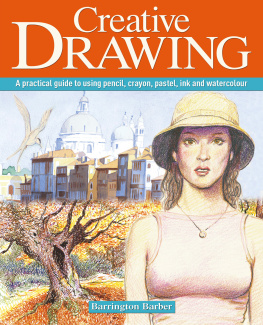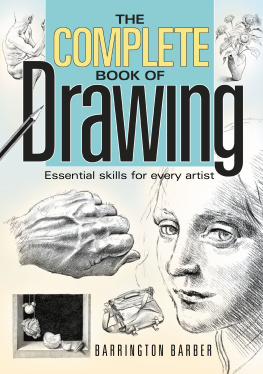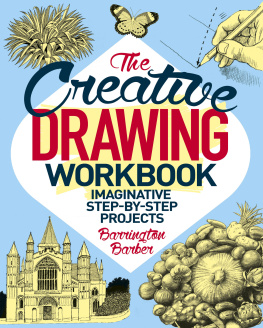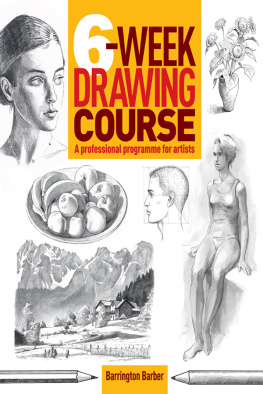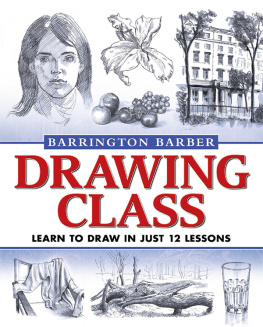Learning to draw is not difficult. Everybody learns to walk and talk, and read and write at an early age. Learning to draw is less difficult than all that. Drawing is merely making marks on paper which represent some visual experience. All it takes to draw effectively is the desire to do it, a little persistence, the ability to observe and a willingness to carefully correct any mistakes. This last point is very important. Mistakes are not in themselves bad. Regard them as opportunities for getting better, and always correct them.
Many of the exercises in this book incorporate the time-honoured methods practised by art students and professional artists. If these are followed diligently, they should bring about a marked improvement in drawing skills. After consistent practice and regular repetition of the exercises, you should be able to draw competently, if not like Leonardo da Vinci that takes a little longer.
Finally, do not despair if your drawings are not masterpieces. If they were, you would not need this book or any other.
First Stages
Before you start you will need to equip yourself with pencils, pens, charcoal, graphite and various kinds of drawing paper. Soft paper with a tooth or smooth hard paper are equally good, depending on the effect you want.
You will need to find an effective grip for your pencil and also get used to handling a drawing board and possibly an easel. Dont rush any of this, just experiment until you discover what works best for you. Once you are comfortable with the paraphernalia, you can begin to think about the business of drawing.
Also in this section you will find a series of exercises designed to introduce you to the basics and give you a grounding in various types of drawing. As you progress you will have to call upon the techniques these exercises teach, so practise them regularly and diligently.
MATERIALS
You dont need sophisticated drawing implements to be effective. If you are drawing for the first time, a B, 2B, 3B or 4B pencil, well sharpened, should be adequate. Buy a range of these and try them out, experimenting with their individual softness or blackness.
Later on you might like to try drawing with a solid graphite stick. This costs more than a pencil but lasts longer, and its also very good when you wish to vary your strokes. Charcoal is marvellous for larger drawings and can be smudged or softened very easily. It also enables you to keep a light touch and still get a black mark.
A pen (0.1 grade or higher) is good to try out when you have developed some confidence.

Pencil

Solid graphite stick

Willow charcoal stick

Permanent ink drawing pen
PAPER
All of the implements mentioned are used with standard cartridge paper. This comes in a variety of weights and textures and is available at art shops. Try out several different types so that you understand their respective merits. The advantage of smooth paper is that you can draw in greater detail and also draw smaller shapes. The advantage of a coarse paper is that the lines you draw on it look slightly broken, giving a textured effect and ensuring that you dont draw too small. Generally, the smaller the drawing the smoother and finer the drawing paper, or implement, should be. Larger drawings require a corresponding increase in the textural coarseness of the paper.
A sketch pad is useful in the beginning because you can carry it around and draw whenever and wherever you like.
HOLDING THE PENCIL
Your inclination will probably be to hold the pencil like a pen. Try holding it like a brush or a stick. Keep the grip loose. You will produce better marks on the paper if your grip is relaxed and there is no tension in your hand or arm.
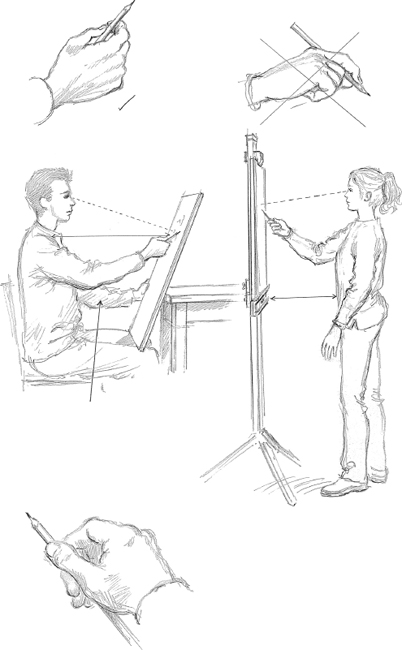
WORKING AT A BOARD OR EASEL
If you dont have an easel and are sitting with the board propped up, the pencil should be at about shoulder height and you should have a clear view of the drawing area.
The best way to draw is standing up, but you will need an easel for this.
There should be plenty of distance between you and the drawing. This allows the arm, wrist and hand to move freely and gives you a clearer view of what you are doing. Step back every few minutes so you can see the drawing more objectively.
Keep your grip easy and dont be afraid to adjust it. Dont have a fixed way of drawing.
USING THE PAPER
Try to work as large as possible from the beginning. The larger you draw the easier it is to correct. Aim to gradually increase the size of your drawing until you are working on an A2 sheet of paper and can fill it with one drawing.
You will have to invest in an A2 drawing board for working with A2 paper. You can either buy one or make one out of quarter-inch thick MDF. Any surface will do, so long as it is smooth under the paper; masking tape, paper clips or blu-tak can be used to secure the paper to the board.
Also for more information.
LINES AND CIRCLES
In this first exercise you will learn the most fundamental cornerstone of good drawing: precision of hand and eye. Start by drawing the following geometrical shapes.
As you practise, concentrate on the point of the pencil exactly where the graphite comes off the pencil onto the paper. Dont be concerned if your attention wanders at first just practise coming back to the point of the pencil. You will notice wobbles and blips creeping into the drawing whenever your attention strays. When you can keep your attention on the point of the pencil and no other thoughts and expectations intrude, you will find that your drawing will go smoothly. When the eye follows the hand exactly, the hand will perform exactly. Keep practising. Always start drawing sessions with five to ten minutes of practice.


